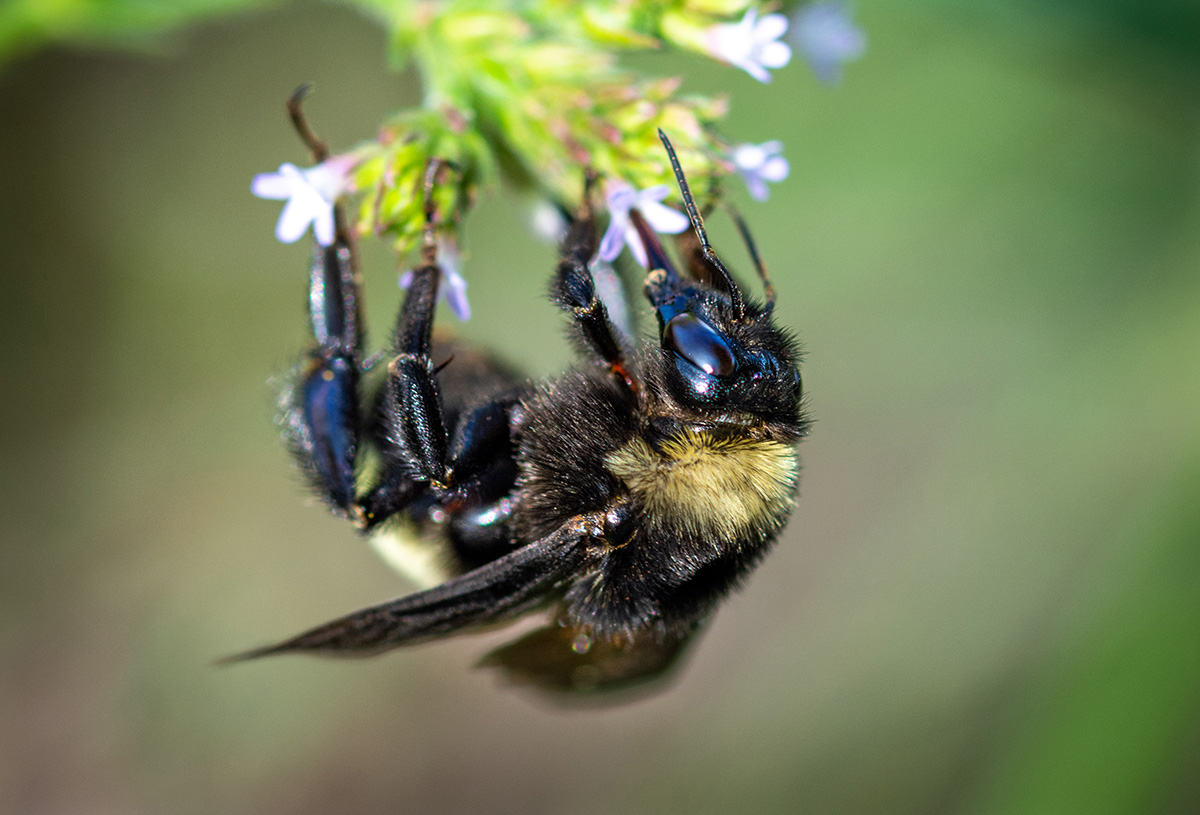The American Bumble Bee (Bombus pensylvanicus)
By Kelly Rourke, Pollinator Partnership
There was a time when you could find this bumble bee across most of North America from Quebec to Florida, westward to South Dakota, then south into the central Mountains of Mexico. Within the past decade, though, its numbers have collapsed. It is strongly suspected that the American bumble bee was infected with a virus when European bumble bees were imported into North America to pollinate greenhouse tomatoes. It is also socially parasitized by Bombus variabilis, which itself has declined severely with few recent records showing this interaction
 This bumble bee’s common name can be misleading because it is hardly America’s most widespread species. Unfortunately, the geographic distribution of B. pensylvanicus has declined and it is rarely present in the northern reaches of its range. It is still commonly found in the southern parts of its historic distribution from Florida, west to Colorado, Texas, and New Mexico.
This bumble bee’s common name can be misleading because it is hardly America’s most widespread species. Unfortunately, the geographic distribution of B. pensylvanicus has declined and it is rarely present in the northern reaches of its range. It is still commonly found in the southern parts of its historic distribution from Florida, west to Colorado, Texas, and New Mexico.
In spring, the overwintering queens of American bumble bee colonies pollinate many seasonal wildflowers. Bombus pensylvanicus nests on the surface of the ground and forages in a variety of large open fields. Vetches (Vicia), clovers (Trefoilium), goldenrods (Solidago), St. John’s wort (Hypericum perforatum), and boneset (Eupatorium) are commonly visited by this species. It is fun to watch these plump ladies hang upside down while they forage on the nodding flowers of trout lilies (Erythronium) or columbines (Aquilegia). Of course, they are collecting nectar and pollen to feed to their first brood of workers. Once the workers mature, the queen stays home and her daughters pollinate the wildflowers and bushes of summer and autumn. Like most bumble bees in North America, the colony is annual. The queen dies in the cold weeks of autumn after she has produced new queens in late summer or early fall. Young queens leave the nest and mate before settling in for winter hibernation.
Bombus pensylvanicus is a large bumble bee with the queen measuring from 21-25 mm, the worker from 14-18 mm, and the male from 16-22 mm in length. The queen is mostly black, including the legs, spurs and tegulae (base of wing). Tergite 1, or the most anterior back portion of the queen is often yellow especially in the middle. Worker bees’ middle tergites are yellow, the tail black, and face long. Their cheeks are slightly longer than broad, and the clypeus (nose) has large punctures except on the mid line. The hair on the top of the head is black, short and even. Males have a yellow abdomen with a black head and black striping in the lower thorax.
 American Bumble Bee along the Shadow Creek Ranch Nature Trail in Pearland, Texas! (© Lawrence - stock.adobe.com)
American Bumble Bee along the Shadow Creek Ranch Nature Trail in Pearland, Texas! (© Lawrence - stock.adobe.com)
Bumble bees are beneficial and effective pollinators, helping to pollinate not only beautiful wildflowers, but also crops and gardens that provide us with nutritious fruits and vegetables. Sadly, these friendly insects are in decline due to a multitude of issues, including but not limited to, habitat loss, pesticide use, pollution, and mites. The easiest way to help bumble bees is to plant native habitat.

